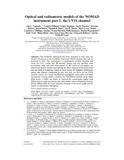| dc.contributor.author | Vandaele, Ann C. | |
| dc.contributor.author | Willame, Yannick | |
| dc.contributor.author | Depiesse, Cédric | |
| dc.contributor.author | Thomas, Ian R. | |
| dc.contributor.author | Robert, Séverine | |
| dc.contributor.author | Bolsée, David | |
| dc.contributor.author | Patel, Manish R. | |
| dc.contributor.author | Mason, Jon P. | |
| dc.contributor.author | Leese, Mark | |
| dc.contributor.author | Lesschaeve, Stefan | |
| dc.contributor.author | Antoine, Philippe | |
| dc.contributor.author | Daerden, Frank | |
| dc.contributor.author | Delanoye, Sofie | |
| dc.contributor.author | Drummond, Rachel | |
| dc.contributor.author | Neefs, Eddy | |
| dc.contributor.author | Ristic, Bojan | |
| dc.contributor.author | Lopez-Moreno, José-Juan | |
| dc.contributor.author | Bellucci, Giancarlo | |
| dc.contributor.author | NOMAD Team, NOMAD Team | |
| dc.date.accessioned | 2018-03-05T19:57:33Z | |
| dc.date.available | 2018-03-05T19:57:33Z | |
| dc.date.issued | 2015-11-09 | |
| dc.identifier.citation | Vandaele, A.C. Y. Willame, C. Depiesse, I. R. Thomas, S. Robert, D. Bolsée, M. R. Patel, J. P. Mason, M. Leese, S. Lesschaeve, P. Antoine, F. Daerden, S. Delanoye, R. Drummond, E. Neefs, B. Ristic, J. J. Lopez-Moreno, G. Bellucci, and the NOMAD Team. "Optical and radiometric models of the NOMAD instrument Part I: the UVIS channel." Optics Express 23 (2015): 30028–30042 (2015). DOI: 10.1364/OE.23.030028. | en_US |
| dc.identifier.issn | 1094-4087 | |
| dc.identifier.uri | http://hdl.handle.net/10680/1384 | |
| dc.description.abstract | The NOMAD instrument has been designed to best fulfil the science objectives of the ExoMars Trace Gas Orbiter mission that will be launched in 2016. The instrument is a combination of three channels that cover the UV, visible and IR spectral ranges and can perform solar occultation, nadir and limb observations. In this series of two papers, we
present the optical models representing the three channels of the instrument and use them to determine signal to noise levels for different observation modes and Martian conditions. In this first part, we focus on the UVIS channel, which will sound the Martian atmosphere using nadir and solar occultation viewing modes, covering the 200-650nm spectral range. High SNR levels (>1000) can easily be reached for wavelengths higher than 300nm both in solar occultation and nadir modes when considering binning.
Below 300nm SNR are lower primarily because of the lower signal and the impact of atmospheric absorption. | en_US |
| dc.description.sponsorship | NOMAD has been made possible thanks to funding by the Belgian Science Policy Office (BELSPO) and financial and contractual coordination by the ESA Prodex Office (contracts n° 4000107727
and 4000103401). The research was performed as part of the “Interuniversity Attraction Poles” programme financed by the Belgian government (Planet TOPERS, contract PAI n° P7/15). UK funding is acknowledged under the UK Space Agency grant ST/I003061/1. | |
| dc.description.uri | https://www.osapublishing.org/oe/abstract.cfm?uri=oe-23-23-30028 | |
| dc.language.iso | en | en_US |
| dc.publisher | Optics Express | en_US |
| dc.rights | info:eu-repo/semantics/openAccess | |
| dc.title | Optical and radiometric models of the NOMAD instrument part I: the UVIS channel | en_US |
| dc.type | Article | en_US |
| dc.identifier.doi | 10.1364/OE.23.030028 | |

